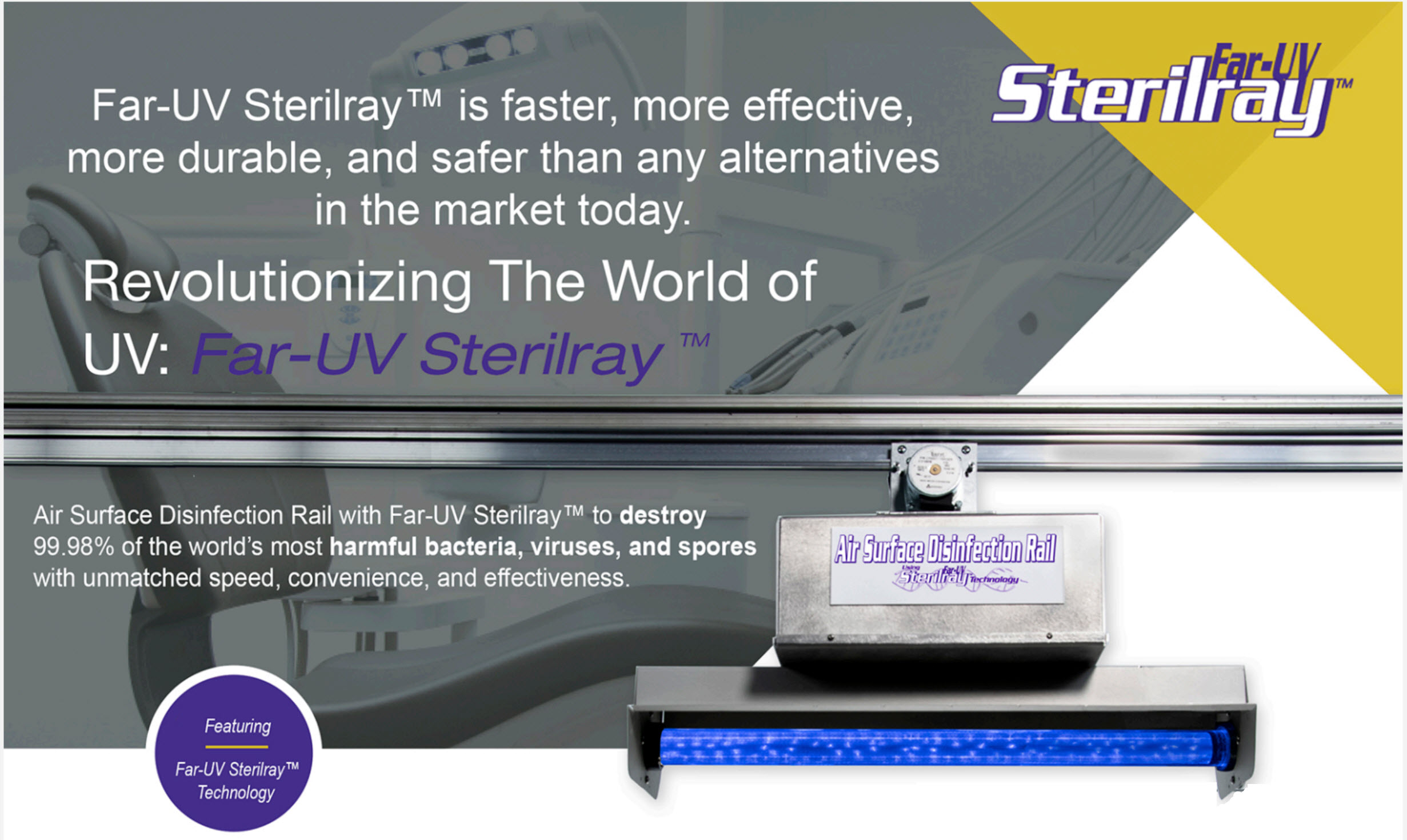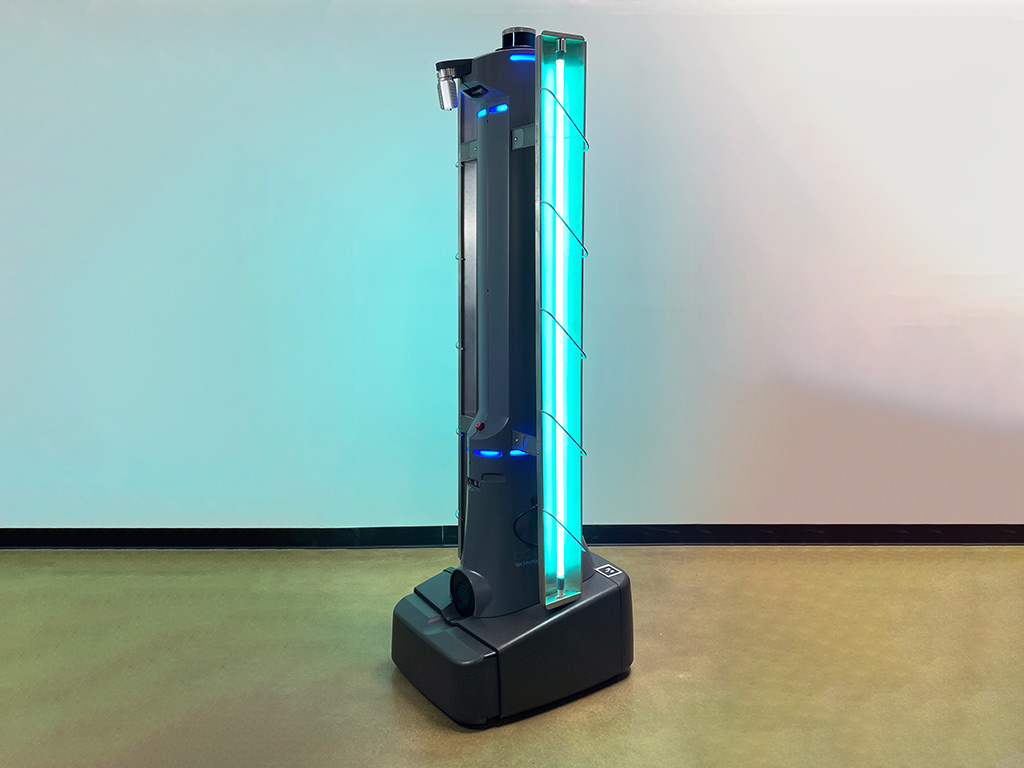Discover the Conveniences of UV Surface Disinfection: Efficient and Eco-Friendly Sanitation
Discover the Conveniences of UV Surface Disinfection: Efficient and Eco-Friendly Sanitation
Blog Article
Taking Advantage Of the Potential of UV Disinfection: Safeguarding Wellness and Health
As the world grapples with the recurring pandemic and the constant danger of transmittable conditions, the importance of maintaining health and wellness and hygiene has actually never ever been a lot more noticeable. In this context, utilizing the potential of UV disinfection arises as an appealing service. UV sanitation, an innovation commonly used in numerous markets, has actually verified reliable in getting rid of hazardous virus. There is much more to check out behind the scientific research of UV disinfection and its applications. From recognizing the devices at play to executing this innovation in our day-to-days live, this discussion aims to clarify the possibility of UV disinfection and its function in safeguarding our health and wellness and health.
Understanding UV Sanitation
UV disinfection is a very reliable and extensively used method for removing harmful virus and making sure wellness and hygiene. This technique uses ultraviolet (UV) light to suspend microorganisms by harming their DNA and avoiding them from reproducing. UV sanitation is especially effective against microorganisms, viruses, and various other bacteria that can cause illness and infections.
The concept behind UV sanitation is basic yet powerful. UV sanitation can be applied in numerous settings, consisting of water treatment plants, healthcare centers, food handling industries, and air purification systems.
Among the benefits of UV disinfection is its capability to properly and efficiently get rid of a variety of pathogens without the need for additives or chemicals. Unlike various other disinfection techniques, such as chlorine or ozone, UV sanitation does not introduce harmful byproducts or chemical deposits right into the setting. Furthermore, UV disinfection is a non-contact procedure, which suggests that it does not call for physical call with the microorganisms, lessening the risk of cross-contamination.

The Scientific Research Behind UV Disinfection
The efficiency of UV disinfection hinges on its ability to interrupt the hereditary product of microorganisms, making them incapable to duplicate and therefore removing their dangerous possibility. UV, or ultraviolet, radiation is a form of electro-magnetic radiation with wavelengths shorter than visible light. It is categorized right into three kinds: UV-B, uv-a, and uv-c. UV-C radiation, specifically, has the quickest wavelength and the greatest power. This high-energy UV-C radiation is most efficient in disinfection applications because it can permeate the cell wall surfaces of microorganisms and harm their DNA or RNA.
When bacteria are exposed to UV-C radiation, the power is taken in by their hereditary product, causing bonds to damage and creating chemical reactions that disrupt their capacity to recreate. This stops the microorganisms from reproducing and spreading infection. UV disinfection is especially efficient versus fungis, bacteria, and viruses, including usual pathogens such as Escherichia coli, Salmonella, and Flu.
The scientific research behind UV disinfection is sustained by considerable study and studies. It has actually been shown that direct exposure to a sufficient dose of UV-C radiation can attain a high degree of sanitation, often going beyond 99.9% efficacy in killing microbes. Nonetheless, it is essential to note that the effectiveness of UV disinfection relies on numerous aspects, consisting of the strength of UV-C radiation, direct exposure time, distance from the UV source, and the susceptibility of the microorganism to UV radiation.
Applications of UV Disinfection
Offered the considerable study and effectiveness of UV disinfection in disrupting the hereditary material of microbes, it is vital to discover the numerous sensible applications of this modern technology. UV disinfection has actually confirmed to be a useful device in a variety of industries where maintaining a tidy and safe environment is essential.
One major application of UV disinfection is in healthcare setups. UV light can be used to sanitize surfaces, tools, and also the air in healthcare facilities and medical centers. This assists to reduce the danger of healthcare-associated infections and makes certain a safer setting for patients and health care employees.
An additional essential application remains in the food and drink market. UV disinfection is made use of to treat water and get rid of dangerous microorganisms, such as E. coli and Salmonella, from the production process. uv surface disinfection. This makes sure the security and top quality of the items we eat
UV sanitation is likewise widely used in water therapy plants and wastewater treatment facilities. It is a reliable technique for ruining harmful bacteria, infections, and bloodsuckers that can be existing in water sources. This assists to provide secure and tidy alcohol consumption water to communities and website link secure the atmosphere from air pollution.
Furthermore, UV disinfection is employed in the pharmaceutical industry to sanitize equipment and maintain the stability of items. It is additionally used in laboratories and research facilities to stop contamination and ensure accurate results.
Benefits of UV Disinfection Modern Technology
One significant benefit of utilizing UV disinfection technology is its capability to effectively remove microorganisms without the usage of severe chemicals. This is specifically useful in different settings, such as medical care centers, water treatment plants, and food handling industries, where the presence of hazardous microorganisms poses a considerable danger to public health and wellness and safety and security.
Unlike conventional disinfection approaches that depend on chemicals like chlorine or ozone, UV sanitation innovation utilizes ultraviolet light to target and damage the DNA of microbes, successfully counteracting their capability to replicate and create infections. This procedure not only removes the need for potentially unsafe chemicals yet likewise decreases the threat of chemical deposit or by-products staying in the cured setting.

Moreover, UV sanitation modern technology is environmentally friendly. As it does not depend on making use of chemicals, it removes the need for their manufacturing, transportation, and disposal, lowering the general carbon footprint connected with sanitation procedures. In addition, UV disinfection systems have a longer life-span contrasted to chemical-based approaches, resulting in less regular substitute and further lowering waste.
Applying UV Disinfection in Every Day Life
To efficiently apply UV sanitation in every day life, individuals and organizations can integrate mobile UV disinfecting devices into their hygiene regimens and cleaning up methods. These tools are developed to send out ultraviolet light, which has actually been confirmed to eliminate or inactivate a large range of bacteria, consisting of microorganisms, viruses, and fungis. By using mobile UV sanitizing gadgets, people can disinfect typically touched items and surface areas, such as cellular phone, secrets, laptops, and doorknobs, lowering the risk of spreading out germs and infections.
Along with integrating mobile UV disinfecting tools, it is essential to adhere to appropriate standards and recommendations for effective UV disinfection. This includes guaranteeing that the device is made use of properly and for the advised period to achieve optimal disinfection results. It is likewise crucial to prioritize precaution, such as putting on protective glasses and staying clear of straight exposure of the UV light to the skin.

Furthermore, companies can carry out UV important link sanitation technology in various setups to enhance health practices. Medical facilities and medical care centers can use UV disinfection robots to sterilize person areas, operating cinemas, and various other high-touch areas. Food handling markets can integrate UV disinfection systems right into their production lines to improve food safety and security and stop contamination.
Verdict
In verdict, UV sanitation modern technology holds excellent possible in protecting wellness and health. With its many benefits, UV disinfection is a valuable tool for preserving a healthy and clean atmosphere.
Unlike various other disinfection approaches, such as chlorine or ozone, UV sanitation does not present harmful by-products or chemical deposits right into the setting. It is crucial to keep in mind that the performance of UV disinfection depends on numerous factors, including the intensity of UV-C radiation, direct exposure time, range from the UV source, and the sensitivity of the bacterium to UV radiation.
Another benefit of UV sanitation modern technology is its capacity to give continuous and rapid sanitation. Unlike guidebook cleaning techniques, which can be taxing and need considerable labor, UV sanitation systems can be automated and operate continually, making certain regular sanitation without human treatment.To efficiently carry out UV sanitation in daily life, companies and individuals can incorporate mobile UV sterilizing devices right into their hygiene regimens and cleansing practices.
Report this page